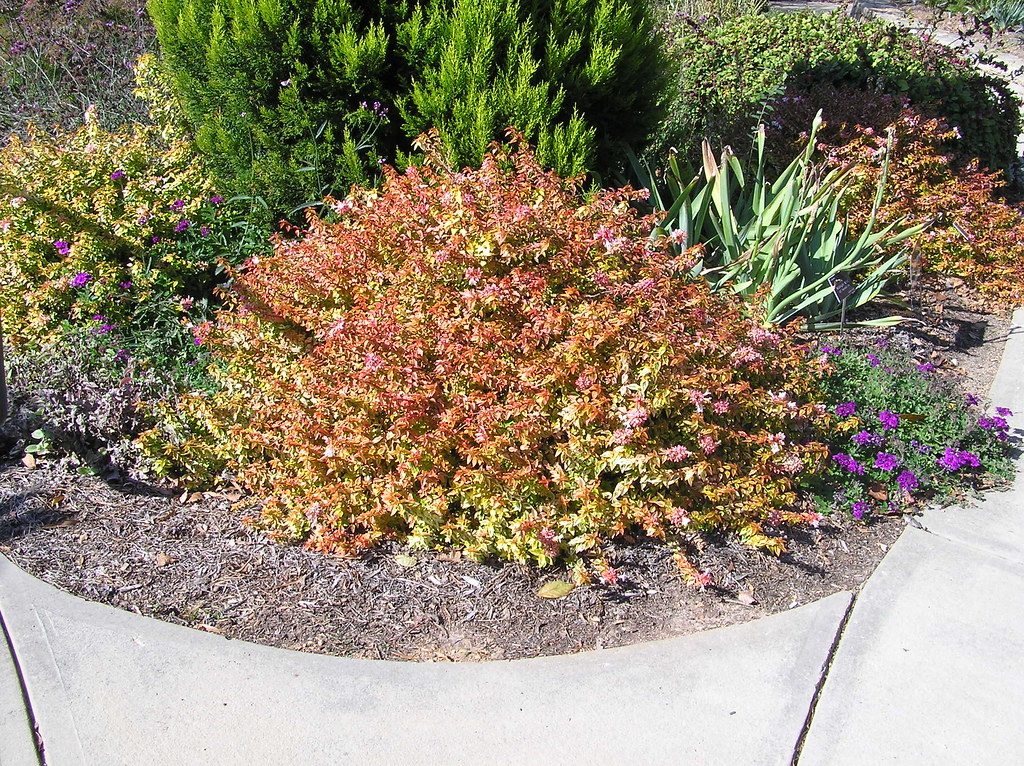

Last year I received a gift shrub from a dear friend. It is rarely damaged by deer, disease, or insects. Its arching stems look like a waterfall cascading over walls. Winter Jasmine is an excellent groundcover plant for slopes that would be difficult to mow. Tiny (less than an inch) compound leaves appear opposite on stems, which allows the gardener to distinguish it from Jasminum floridum, a visually similar plant with alternate leaves and the same messy haystack of stems. Winter Jasmine stems are squarish in cross section, with four definite angles, while Forsythias are round.

They have encroached into the territory of a nearby row of boxwoods that I want to preserve, so in March I’ll cut the entire hedge to within a few inches of the soil and use a sharp spade to sever and remove the roots outside the target range. I inherited an overgrown hedge of these plants when we bought a new home. Remedy this with severe pruning as soon as the flowering season ends. Left alone, plants take on an unkept, thicket-like appearance after a few years.
#KALEIDOSCOPE ABELIA LOSING LEAVES FULL#
It flowers best in full sun but will tolerate shade, poor soil, and drought. Any stems that touch ground will take root. Like Forsythia, Winter Jasmine will spread aggressively unless controlled. Shrubs are rarely bothered by deer and resist damage from pollution, drought, or salt. Flowers open over several weeks in summer, but may appear sporadically at any time. The bell-shaped pink, rose, white, or lavender flowers attract bees, butterflies, and hummingbirds. It prefers well-drained soil, acidic to neutral, and will accept some drought once established. ‘Confetti’ has pink, green and white foliage (a real stunner, in my opinion).Ībelia is hardy in zones 5-9. ‘Sunrise’ has green, yellow and white variegated foliage. ‘Kaleidoscope’ has multicolored foliage with yellow leaves in spring and orange-red in fall. Second, there is a entire rainbow of foliage colors available. ‘Edward Goucher,’ ‘Rose Creek,’ and ‘Little Richard’ are all dwarfs, reaching heights of 36 inches or less. First, many are available in mature sizes of four feet or less, making them ideal for foundation plantings. Unfortunately, to keep them in check, homeowners regularly pruned their arching stems into ugly, tight meatballs.Ĭurrent Abelia cultivars have two advantages over the older generations. New growth was a bronzy pink, and honeybees swarmed over their nectar-rich tubular pink and white blooms. Glossy Abelia of yesteryear ( Linnaea x grandiflora, pronounced LIN-ay-ee-uh gran-duh-FLOR-uh, formerly known as A belia x grandiflora) was appreciated for its tolerance to heat, drought, humidity, and poor soil. You could almost hear them whisper, “Repent!” But I digress. Their whippy tentacles waved around like something from The Little Shop of Horrors. There was a pair of them planted either side of the rear entrance of a local church. Those evergreen or semi-evergreen shrubs grew to heights of six feet or more and threw unruly sprouts that reached for the sky, creating an unkempt appearance.

Modern Abelia cultivars are a vast improvement over the version that was common in every garden several decades ago.


 0 kommentar(er)
0 kommentar(er)
